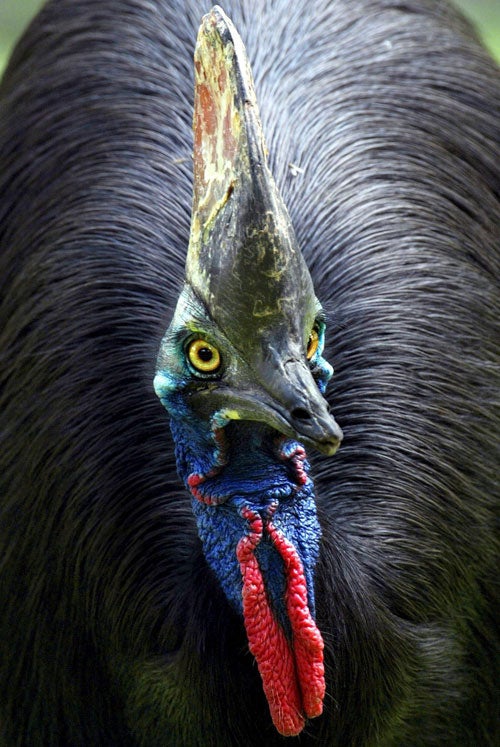Cyclone puts cassowary in greater peril
The 6ft bird was at risk before the storm hit Australia. Now its survival is even more doubtful

The cassowary, one of the world's largest birds, beaten for size and weight only by the ostrich and emu, is in a fight for its life. The flightless bird has talons that can tear open a human with one swipe, but it is normally a placid and shy fruit-eater. Now it is in peril as food supplies run low in the wake of Cyclone Yasi, which flattened vast swathes of rainforest in northern Queensland earlier this month.
Emergency food drops have already been made in the Mission Beach area, south of Cairns. The Queensland government has set up more than 50 feeding stations to supplement the birds' diet.
Graham Lauridon, a local vet, said the main threat is to younger cassowaries, unable to fend for themselves, who have to compete for food with adult birds. "There's a strong likelihood we will lose quite a few in the next six months," he said.
Such was the devastation caused by Cyclone Yasi, which passed directly over Mission Beach, that much of the fruit that forms the principal ingredient of the bird's diet was left to rot on the forest floor. "Their habitat has been severely damaged, and very soon there won't be any fruit left for them to eat for some months," Mr Lauridon said. There are an estimated 200 cassowaries in the Mission Beach hinterland, roughly a 10th of Australia's population.
What makes the survival of the cassowary so important is the role it plays in spreading the seeds of rainforest trees. The seeds are often so large that only the cassowary can swallow and thereby disperse them. Many fruit plants will not germinate unless they go through this digestive process.
Apart from government wildlife agencies, individuals such as Bob Irwin, the father of the late television naturalist Steve Irwin, have rallied to the cassowary's cause. Already known for protecting koalas and wombats, he is providing food for cassowaries in the Mission Beach area through his Wildlife Fund. "This is a major threat to their survival," he said. "You've got to remember these birds were an endangered species before the cyclone, so the threat to their survival is even greater now. They've lost their homes and their food and they will be suffering from severe shock. "
Mr Irwin insists it is important to take a long-term view. "It's all very well for people to get excited now, but we are looking at a two-year programme to keep these birds fed – so we have to make sure there's money available for them further down the track, too."
Adult cassowaries, which are more than 6ft tall, are fiercely territorial and dangerous if cornered. They have been known to kill dogs and seriously injure humans. They also enjoy pursuing those who run away. Tourists have been known to run miles before the bird loses interest. Birds can kick, peck and head-butt those who come too close, particularly if defending their young. Their massive middle claw, which can extend to nearly 7in, is a vicious defensive weapon. When lashing out, they jump and kick with their powerful legs. They are also hard to find, their glossy black plumage blending into the rainforest shadows.
In their search for food since the cyclone, some cassowaries have turned to man-made sources, encouraging locals and tourists to feed them. A few have even been foraging around tourist resorts. Mr Lauridon believes this is counter-productive and urges people not to feed them. "They are more likely to be aggressive if they're used to being fed by the public and then come looking for food in people's backyards – that's part of the problem," he said.
Join our commenting forum
Join thought-provoking conversations, follow other Independent readers and see their replies
Comments
Bookmark popover
Removed from bookmarks